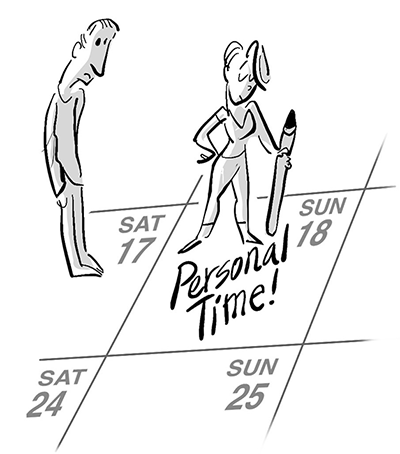From Controlling to Caring
What is the Difference Between Caring for and Controlling our Loved Ones?

My client, whom I will call Trish, has an adult daughter, Dawn, who is overweight and at risk of developing diabetes. As a loving mother, Trish is naturally worried. She knows that if Dawn had a better diet, she would be healthier and happier, which is what Dawn says she wants. Watching Dawn eat fast food and empty-calorie snacks is upsetting, and Trish shows her displeasure with subtle comments like, “I wonder how many grams of sugar are in that?” When Trish has Dawn for dinner and her daughter asks for a second serving of dessert, Trish will ask, “Why don’t you wait a few minutes and see if you’re still hungry?” She does other things like sending Dawn articles on healthy diets and diabetes prevention. She cares deeply about her daughter and wants her to be healthy and happy. But what she’s doing isn’t helping.
Caring Versus Control
Imagine that your hand is an open heart. It reaches out to the other person, palm open. This is caring, open, tenderhearted, and compassionate. You can offer help, but your hand is open, so you let go of the outcomes. They may take in what you say, they may ignore it, or they may reject it. Caring is trusting that the person you love is in charge of their own life and their happiness and health are based on the choices they make for themselves. When we care for someone, they usually feel loved and supported.
When we care for someone, they usually feel loved and supported.
Now imagine your hand is a tight fist, your reach out to the other person, grasping on to them, trying to fix them, attaching to what they do or don’t do. Your fist represents you trying to protect your heart just as you are trying to protect them. This is controlling. When we control someone, they usually feel judged and defensive.
When we control someone, they usually feel judged and defensive.
The Courage to Care
When we care deeply for someone, we will feel fear; this is inevitable. We want them to be happy and free from suffering. We become frightened when we see them do something that may cause pain. This fear presents a fork in the road; we can go down the path of caring or the path of control. If we choose the path of caring, we keep our hearts open. To care, we must be willing to allow our hearts to break, which takes tremendous courage.
On the other hand, control is an attempt to keep our hearts from breaking. We try to get the other person to make the right choice, so we don’t have to feel the pain of their suffering. But the truth is, we are not in control of others. It is hard enough to make choices that support our own health and happiness and impossible to do so for others. Either way, we will experience heartbreak in the end, and in the process, we often alienate the ones we love.
3-Steps to keep your heart open.
Trish chose the path of caring for her daughter.
The first step was identifying her values and what she was aiming at. She chose Peace, Connection, and Acceptance.
Second, I had her identify the mindsets that would support a caring stance. She came up with:
“It is more important to enjoy my precious time with my daughter than trying to control what she eats; this gets in the way of my relationship.”
“She already knows what I think, this might influence her choices at some point, but I can’t control what will happen.”
Third, she needed to accept that anxiety she felt as something to be allowed rather than acted out on.
I made Trish a meditation to help her allow her anxiety. If this is something you struggle with, click on either the video below or this link to listen to a 5-minute meditation that will help you keep an open heart with the ones you love.




Recent Comments